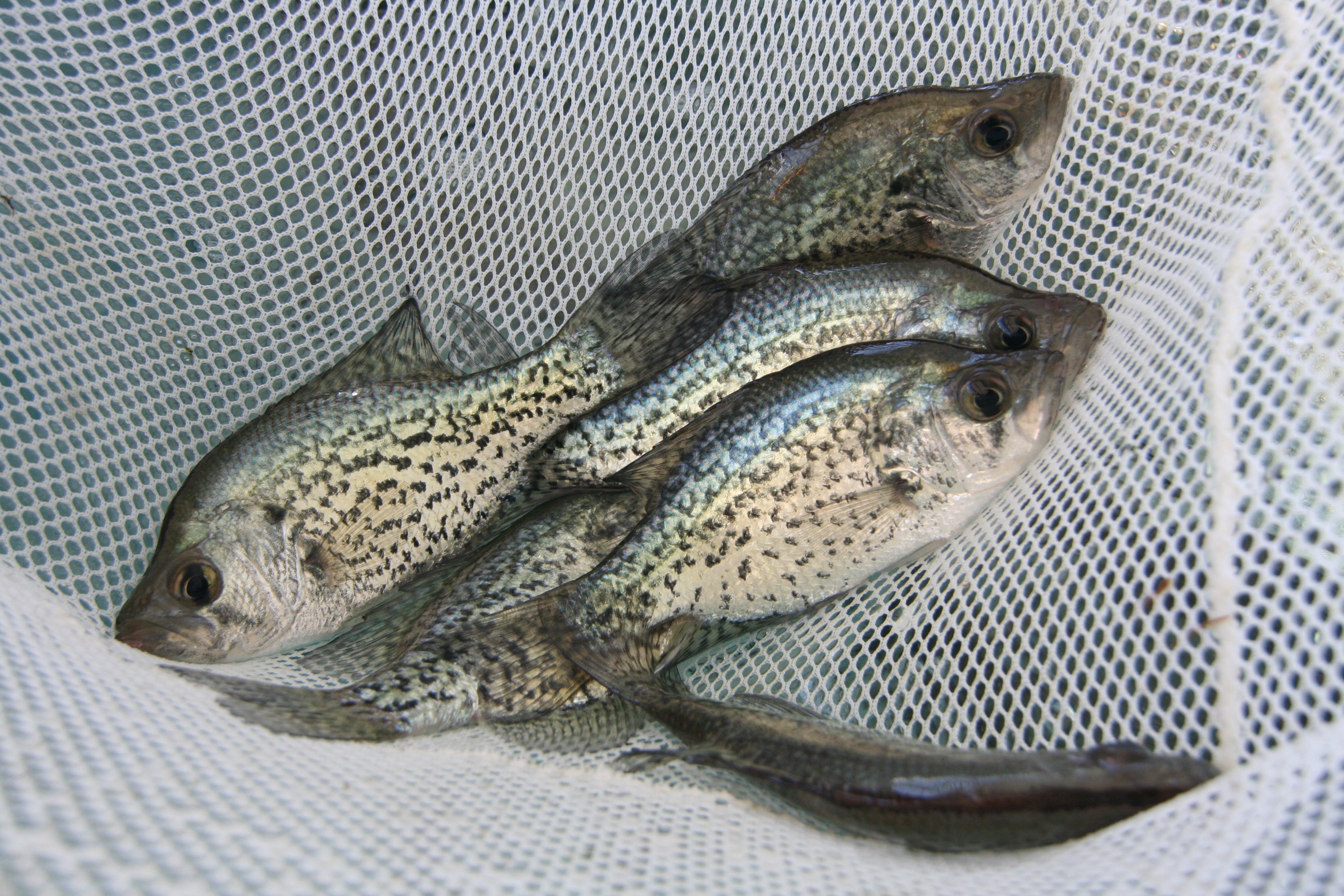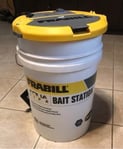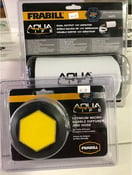When buying freshwater fish for pond stocking, an important detail to take into consideration is how you are going to get the fish back to your lake or pond.
How to Transport Fish
At Pond King, we offer three fish transportation options based on the quantity of fish you'll be buying and the pond's relative location. *(Please note, we do not ship live fish)
Options for Fish Transportation:
-
Pond King can bring the fish to your property and stock your pond for you
-
You can come to the store, and we'll bag up smaller quantities, and you take them back to your property, or
-
You can come to the store with an aerated tank, which we'll fill up with fish for you to haul home.
Pond King Delivery is the Best Way to Ensure Safe Restocking
Without a doubt, the most convenient way to get fish is Pond King's delivery.
In this scenario, fisheries biologists will transport your fish in one of our vehicles that have been modified specifically for this purpose. You never have to lift a finger. There is a minimum order requirement and a delivery fee for this service. You can use this delivery area map to get an idea of the order size and delivery fee you can expect for your location.
Smaller or More Local Orders Can be Picked up Safely
If you are getting a relatively small quantity of fish (and quantity is relative to the size of the fish), and you live within a 2 to 2 1/2-hour drive from the store, you want option 1 or 2.
Determining if we'll bag your fish or you should bring a tank with a diffuser gets a little more challenging because there are so many variables. The key factors are size and quantity of fish, distance from Pond King, and weather. If we bag your fish, we'll aerate the water with enough oxygen for about a 2 to 2-1/2 hour trip - including acclimation time (15-20 minutes).
If it's hot (over 82 degrees), then the length of time will shorten.
Factors to Consider Prior to Transporting Fish
Several factors play a crucial role in the success of your fish transport. By eliminating as many variables as possible, you greatly improve the chances of all your fish surviving a relocation event. Consider how many fish you intend to stock, how far you will have to travel and what time of year you are making the trip.

Size and Quantity of Fish
Size and quantity of fish will influence your decision to have us bag your fish or whether you will need to bring a tank with a diffuser, simply because you'll need to figure out how many bags of fish you will end up with.
Each bag is about the size of the white 5-gallon bucket (those buckets emptied and cleaned are a great way to keep your bagged fish from sloshing around in the bed of your truck).
If you are getting more than 15 or 16 bags of fish, you'll want to bring an aerated tank.
Here is a sample of the size and bag limits for commonly stocked fish:
| Fish | Size | Fish / Bag |
| Minnows | <3" | ~200 |
| Catfish | 4-6" | 50 |
| 6-8" | 25 | |
| Bluegill Crappie Redear |
3-4" | 50 |
| 4-4.5" | 25-30 | |
| Hybrid Stripers Bass |
1-3" | 100 |
| 6-8" | 15 | |
| Grass Carp | ~12" | 2 |
| Tilapia | 4-6" | 12 to 18 |
Relative Distance and Weather
The hotter it is, the more stressful transportation is on fish - which is why we typically stock fish in the spring and fall.
The more stressed they are, the more oxygen they consume, so there is an inverse correlation between travel time and temperature. The higher the temperature, the less time you'll have to transport.
If you live within a 2-hour drive and you keep the fish covered and acclimate them to their new home appropriately, bagging is a perfectly acceptable method of transport.
However, if your drive plus acclimation time is pushing the 2 1/2 to 3-hour limit, and it is hot, you'll want to consider bringing a bait tank or a cooler with an aerator.
The Pond King team will load the fish directly into your tank and add salt to calm the fish for the ride. This method will give you a little more flexibility in the time frame and save room in your vehicle.
You can check our service area map to see what the delivery rates are and what the best option for you may be.
Please remember, we do not ship fish, so if you live outside this service area and need fish, we recommend a local provider fishery closer to home for the safety of the fish and cost to you. If you have questions, we can certainly provide support and recommendations.
How to Choose or Make a Tank for Transporting Fish
When selecting a tank for transporting fish, it is important to consider how many different species, the size of each species, and how many of each species you're planning to transport. Transporting too many individuals in one tank increases mortality rates as does transporting a predator species with their forage - your gamefish will make the trip, but their bellies will be bloated by the time you get them home.
-
Tank 1: Bass and catfish
-
Tank 2: Crappie, Bluegill, and Redear Sunfish
-
Tank 3: Fathead Minnows and Golden Shiners

Frequently, when you're buying fathead minnows or golden shiners for bait, you can purchase an aerated bucket from the tackle shop (we carry them at Lake Pro Tackle).
Aerated buckets make transporting bait much easier and keep your bait alive longer while you are out fishing. These buckets can also be used to transport small quantities of fish for supplemental stocking.

You can also easily assemble your own tank by using an old cooler you have lying around the house. The only thing you'll need is a portable aerator or two, depending on the cooler's size. You can clip the portable aerators to the cooler's handle and run the air tubing and stone into the cooler by leaving the lid cracked, but this will allow water and fish to possibly jump out.
Instead, we recommend threading the tube through a small hole drilled in the cover of the cooler.
Why is a Cooler a Better Tank than a Plastic Tote?
Using a cooler is often suggested as opposed to a plastic tote because of the insulation and rigidity. Insulated coolers help prevent the water from heating up in the warmer months, adding stress to the fish and increasing mortality rates during the trip.
Tank Rentals are an Option When Buying from Pond King!
The third option is to rent one of our smaller hauling tanks and an oxygen bottle to transport your fish. The benefit to this option is that we set everything up for you so you don't have to do anything. This is a good option for people who travel through our area often since the tank will need to be returned to us the next day.
Keeping Fish Calm and Healthy
More often than not, to keep fish calm and reduce their stress levels, we will use stock salt as an additive to our hauling tanks.
By adding a small amount of salt to the tank, you calm the fish by slightly increasing the water's salinity, allowing the fish to save energy for osmoregulation as the natural salts in their body are not being diffused out into the water as quickly.
The addition of salt also aids in thickening their slime coat, which aids the fish in their ability to resist parasites, abrasions against the wall of the tank, and hauling stress. Another benefit of salt is that the increase of the Chloride (Cl-) portion of salt in the environment decreases the amount of Nitrite (NO2) that can pass into the fish's bloodstream through the gills. This is especially important in channel catfish as Nitrite in the blood is the cause of brown blood disease, both difficult and expensive to cure.
Try Tank Additives to Calm Your Fish
If you would like salt added to your tanks, we will be more than happy to do it for you here at the store. There are other additives on the market today that can aid in the transportation of fish, such as Sure Life products. You can also watch “How to Transport Fish” to learn more.
Trust Pond King for Pond Stocking and Fish Management
If you have any questions about additives, fish hauling, or hauling densities, feel free to give our team a call or contact us to see how we can help improve your private lake fishing!!




